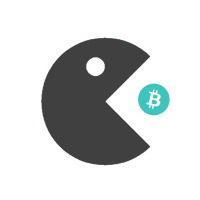Polkadot

Polkadot Chart
Polkadot is a cryptocurrency platform which is the inspiration and creation of Gavin Wood: a cofounder of the rival Ethereum blockchain. The system is powered by a cryptocurrency called DOT which is the cryptocurrency that makes the Polkdot world go around.
Mr Wood
Gavin Wood created an organisation called the Web3 foundation to develop decentailsed crypto software, part of which is Polkadot. Much of the work done for Polkadot is carried out by another company created by Gavin called Parity Technologies. He’s been busy: Wood invented Solidity, the language used by developers to write dApps (decentralized apps) on Ethereum (read our article on ‘What is Ethereum Used For?’ to find out more. He was the Ethereum Foundation’s first CTO, and he was also a research scientist at Microsoft back in the day.
The Web3 team, are responsible for two blockchains,
– Kusama, launched in August 2019 is the testbed for new developments that can potentially make their way to Polkadot. It’s native token is KSM.
– Polkadot was launched in May 2020 with the creation of it’s genesis block. It’s native token is DOT.
Why buy DOT?
The DOT cryptocurrency is the key to maintaining and running the whole Polkadot network.
By owning and staking DOT, users are able to vote on network upgrades, (each vote is proportional to the amount of DOT you stake. Staking DOT could net you around a 12% annual return (APR)).
Note that there is no fixed capped supply of DOT. The total DOT supply is around 1 billion, and new DOT tokens will be released in the future, at a predetermined inflation rate. However, as DOT stakers are the ones that vote on network changes, this gives a level of trust in the currency.
A Blockchain with Many Chains
So like many blockchains the Polkadot chain is under constant evolution.
Polkadot is building a system by incentivising third parties to run a blockchain on top of which others can launch and operate their own blockchains. And it’s all done to a specified set of rules and regulations so that everyone can communicate with each other and the whole system is secure and easy to scale.
Polkadot, like Cardano, is known as a third generation blockchain (distributed ledger) that was designed to address several challenges in the technology, specifically connecting to other blockchains and scaleability. Just like Ethereum, Polkadot uses real world information pulled in from Oracles to help make decisions (read our ‘What is Chainlink?‘ page for more on this).
Relay Chain and Parachains
Polkadot should be seen as the platform for the creation of a multi-chain ecosystem. They call these multiple chains parachains: it’s an ecosytem of cryptocurrencies if you like. The main network that sets the rules and keeps the whole thing secure is called the Relay Chain. Transactions on the Relay Chain are permanent, and networks created by users are the Parachains.
Polkadot was designed to improve communication and interoperability across chains. As part of this, the team developed an open source framework called Substrate that allows developers to create new chains very easily.
Advantages
Developers gain many advantages from using Substrate, such as:
– Native Polkadot compatibility
– Hassle free upgrades (you don’t need to fork i.e. split your blockchain when upgrading)
– Interchain connectivity: once connected to Polkadot you can pass messages to other chains in the network
– Security, once a chain is connected to Polkadot it will be secured by Polkadot’s pool security.
By using Substrate, developers can rest assured that their chains are interoperable with the Polkadot ecosystem.
The Relay Chain is the Matrix
At the core of Polkadot is the Relay Chain. The main purpose of the Relay Chain is to manage the whole system including all of the Parachains. It provides the rules for the underlying governance, parachain auctions (described below) and a new consensus mechanism called Nominated Proof of Stake (NPoS) that incentivises 3rd parties (like Bitcoin’s miners) to keep the whole show on the road.
How do Developers connect to the Polkadot Chain?
If a developer is using the Substrate framework, they have the potential to develop a Parachain and participate in the Polkadot network.
The planned total number of parachains that Polkadot will support is 100 and it is expected to take a few years before these slots are filled. These Parachain slots are leased for a maximum of two years and are acquired via auction.
Parathreads
A Substrate based chain may also connect to the system via a Parathread. Parathreads and Parachains are very similar from a development perspective but the key difference is economics.
Unlike Parachains, Parathreads participate temporarily in the Polkadot network on a block by block basis thus benefiting from the Polkadots security model. Basically a Parathread shares a Parachain slot with other Parathreads. It’s like a shared hosting service where you share the server with other users.
Take me to the Bridge
Alternatively developers can connect their independent chain to Polkadot with a Bridge. A Bridge is also used for non substrate based chains (non-Polkadot blockchains) like Bitcoin and Ethereum. A bridge is a effectively a type of parachain that allows non Polkadot blockchains to act as a virtual parachain and extends its capabilities within the ecosystem. Think of it as a translator.
A chain could evolve in the way it connects to the Polkadot Relay Chain (the Mainnet) during its lifetime, starting as an independent chain connected by a bridge, evolving into a Parathread or a Parachain. It is relatively straightforward to switch between a Parachain and Parathread.
Proof of Stake Mechainsm, Incentivising 3rd Parties
Finally Polkadot uses a new Proof of Stake mechanism called Nominated Proof of Stake (NPoS). There are two main participants called validators and nominators who ensure the validity and security of the network. Polkadot NPoS is a called a “hybrid consensus model”. Production and security are separated.
Polkadot NPoS use two key algorithms:
- GRANDPA, decides which changes (ie new blocks added to the end of the chain) are final. it’s also know as the the Finality Algorithm. It has no role in the production of new blocks. Validators import newly created blocks and the GRANDPA algorithm verifies them.
- BABE is the block production engine. It breaks time up into Epochs and Slots. BABE selects the author to create the next block.
Summary
So, there you have an introduction to the Polkadot ecosystem. Some of the concepts are fairly complex, but we have tried to explain these in plain English. If you’d like to explore more I strongly recommended looking at the Polkadot wiki.
